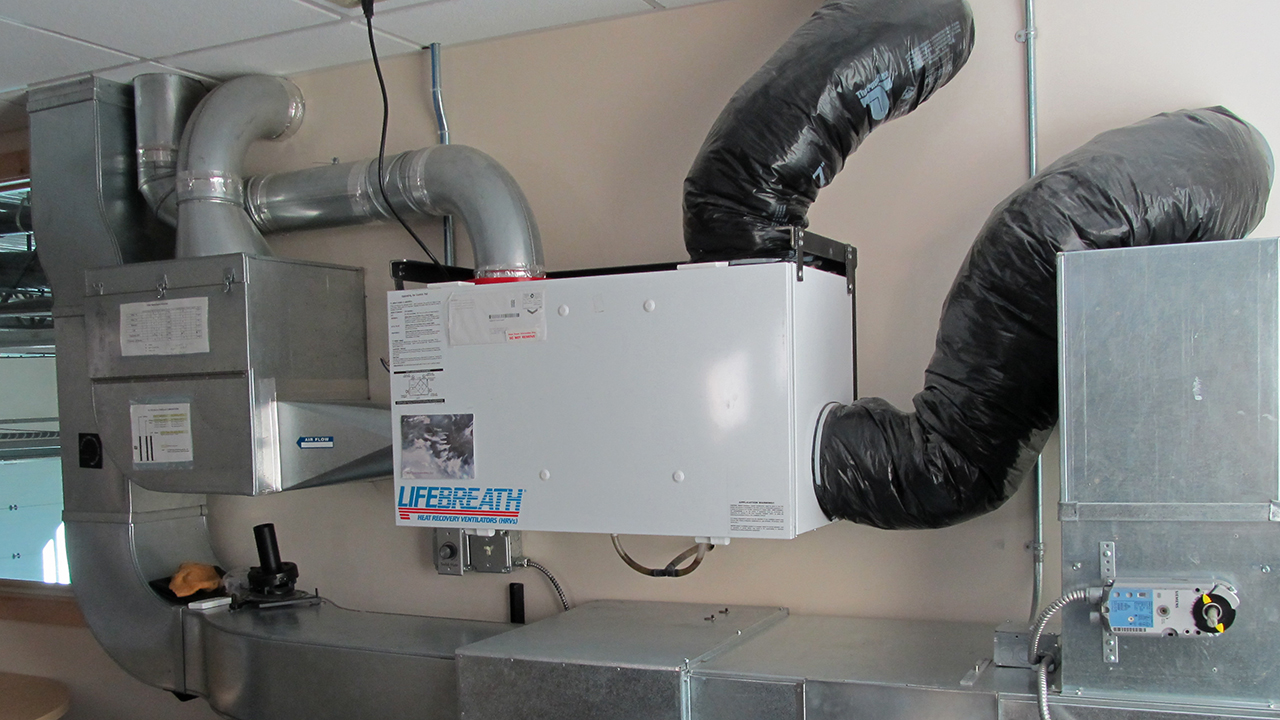How HRV Delivers a Healthier Indoor Living Environment
Wiki Article
Exploring the Benefits of Heat Recovery Ventilation for Power Efficiency in Houses
Heat Recovery Ventilation (HRV) systems supply homeowners a sensible technique to improving power efficiency. By redeeming heat from outgoing air, these systems can substantially decrease cooling and heating costs. Furthermore, they give a steady supply of fresh air, boosting interior air high quality and convenience degrees. As home owners consider lasting choices, understanding the nuances of HRV systems comes to be significantly vital. What aspects should one review prior to making such an investment?Recognizing Heat Recovery Ventilation Systems

How HRV Improves Indoor Air Top Quality

Energy Financial Savings: The Financial Advantages of HRV
Taking full advantage of power effectiveness, heat recovery ventilation (HRV) systems provide significant financial benefits for property owners. By recouping and reusing heat from exhaust air, HRVs substantially reduce cooling and heating prices. This technology can cause power cost savings of up to 30%, depending upon environment and usage patterns. Property owners typically notice minimized energy bills shortly after installment, making HRVs a monetarily sensible financial investment over time. Additionally, several regions offer motivations or discounts for energy-efficient upgrades, better enhancing the financial appeal. As energy prices remain to climb, the cost-effectiveness of HRVs becomes significantly clear. In general, the consolidation of HRV systems not only promotes energy efficiency but likewise adds to long-term economic cost savings for homes.The Ecological Impact of Heat Recovery Ventilation
A substantial ecological advantage of heat visit site recovery ventilation (HRV) systems depends on their capability to reduce general energy usage. By recovering warm from exhaust air and transferring it to inbound fresh air, HRV systems decrease the demand for energy-intensive heating and cooling methods. This reduction in energy need adds to decrease greenhouse gas discharges, as less fossil fuel is required to maintain comfortable interior temperature levels. Additionally, HRV systems enhance indoor air top quality by successfully exchanging stagnant air with fresh exterior air, minimizing dependence on mechanical cooling systems that can damage the atmosphere. On the whole, the application of HRV systems supports lasting living practices and lines up with international efforts to deal with environment adjustment by advertising energy performance in domestic setups.
Picking the Right HRV System for Your Home
Just how can homeowners assure they pick the ideal heat recovery ventilation (HRV) system for their requirements? Initially, they ought to analyze their home's size and design, as these factors influence air movement needs. Next, examining the system's effectiveness scores is important, as higher rankings suggest my response far better efficiency and energy financial savings. House owners need to likewise take into consideration setup and upkeep prices, comparing different brand names and designs for value. Additionally, it is essential to evaluate sound degrees, as some systems operate even more quietly than others. Consulting with cooling and heating professionals can offer tailored suggestions based upon particular home problems. Finally, checking out customer testimonials and guarantees can aid in making a notified choice, ensuring that the selected HRV system efficiently enhances indoor air quality and power effectiveness.Often Asked Inquiries

Just how Typically Should I Tidy or Maintain My HRV System?
The frequency of cleaning or preserving a warmth recovery ventilation (HRV) system normally depends on use and ecological variables. Normally, it is a good idea to perform upkeep every six months to ensure peak performance and air quality.
Can HRV Solutions Aid Minimize Moisture Degrees Inside Your Home?
HRV systems can effectively decrease interior humidity degrees by trading stagnant, humid air with fresh, drier air from outdoors. HRV Heat Recovery Ventilation. This procedure helps keep a balanced interior environment, improving convenience and preventing moisture-related problems
What Is the Life-span of a Normal HRV System?
The life-span of a regular heat recovery ventilation (HRV) system differs, why not look here usually lasting between 10 to 15 years. Regular maintenance can expand its performance and functional life, making certain peak performance throughout its usage period.Are There Any Sound Interest In HRV Solutions?
Noise worry about HRV systems can arise, specifically from follower operation. Numerous modern-day devices are designed to reduce audio degrees, guaranteeing they run silently while preserving performance, which deals with possible disturbances in living atmospheres.Can I Set Up an HRV System Myself, or Do I Need a Professional?
The private contemplated whether to mount the heat recovery ventilation (HRV) system directly or employ a specialist. Generally, while do it yourself installment is feasible, experience warranties proper functionality and compliance with regional building ordinance, improving system performance.Report this wiki page